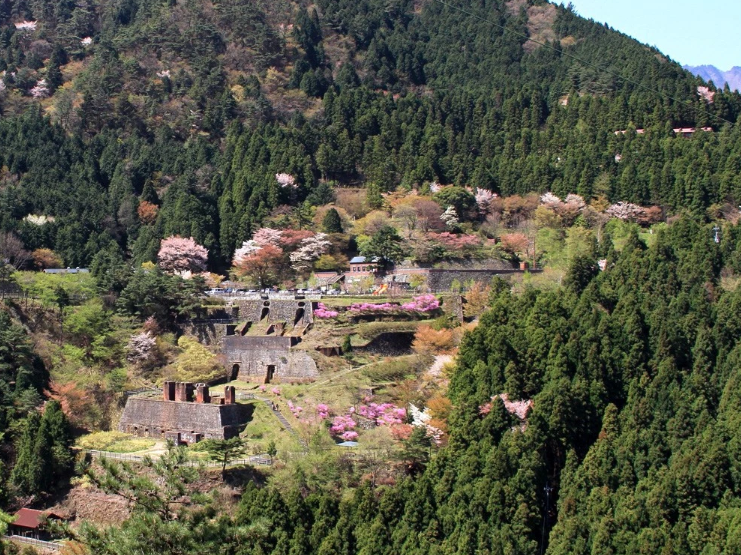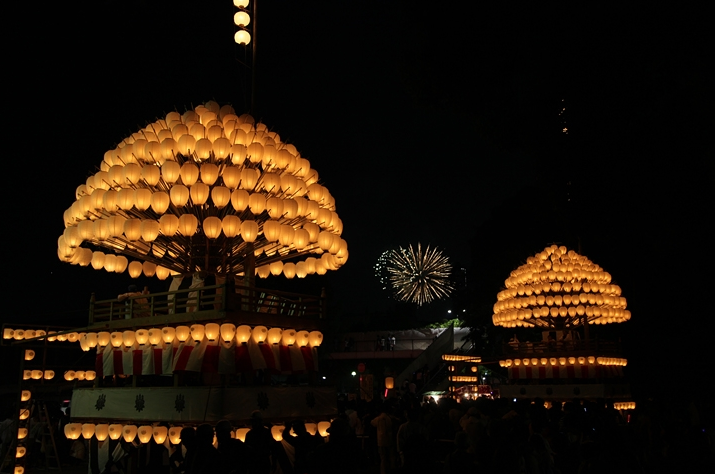A Must-See: The “Machu Picchu of the Orient” in Niihama City
Niihama City is located in the Tōyo region of Ehime Prefecture.
Since the opening of the Besshi Copper Mine in the Edo period, Niihama has thrived as a company town centered around copper smelting. As a core city in the Tōyo new industrial city area, Niihama has developed into one of the prominent industrial cities along the Seto Inland Sea, where you can enjoy copper mine tourism.
At “Minetopia Besshi,” a theme park utilizing the facilities of the old Besshi Copper Mine, you can tour industrial heritage sites, explore mine tunnels, and even try your hand at panning for gold. In the Tōhei Zone, where the last mining headquarters of the Besshi Copper Mine were located, you can see historical sites known as the “Machu Picchu of the Orient.”
The Ehime Prefectural Science Museum offers a chance to learn about various scientific concepts through hands-on experiences. It also features one of the world’s largest planetariums with a diameter of 30 meters, capable of projecting approximately 650,000 stars, giving visitors a sense of being in outer space.

Quoted from the Official Minetopia Besshi Website
Let’s Go to the Niihama Taiko Festival
Location: Various places in Niihama City, Ehime Prefecture
Date: October 16-18 every year (In some areas, it starts from October 15)
Access: 10 minutes on foot from JR Niihama Station
15 minutes via Route 11 from Niihama IC on the Matsuyama Expressway
https://www.city.niihama.lg.jp/soshiki/unyu/taikomatsuri.html (Niihama City Official Website)
The Niihama Taiko Festival is a major autumn festival celebrating the harvest in Niihama City. It is one of the three major festivals of Shikoku and one of Japan’s three major fighting festivals, drawing tens of thousands of spectators each year. Over the course of three days, more than 50 beautifully decorated floats called “taikodai,” adorned with gold and silver threads, parade through Niihama City. This festival is primarily a men’s festival, with mostly male participants.
The origins of this festival are unclear, but there is a theory that it existed as far back as the Heian and Kamakura periods. Originally, the taikodai were a type of float that accompanied the mikoshi (portable shrines) during religious festivals, but over time, they became the central feature of the festival.
“Kakikurabe” is the Main Attraction!
The main attraction of this festival is the “Kakikurabe” (shouldering competition). During this event, the wheels of the taikodai (festival float) are removed, and about 150 carriers called “kakifu” lift the 2.5-ton taikodai using only their own strength. They perform by lifting the taikodai as high as possible in a move called “sashiage” and compete to see how long they can hold it without lowering it to the ground.
Additionally, there is a ritual called “Funamiyuki,” which is held to pray for bountiful catches and safety. In this event, the taikodai is placed on a boat, and performances such as the kakikurabe are carried out. The Funamiyuki takes place in the Kawanishi district.

Quoted from JOYTRIP
Don’t Miss the “Hachiawase”!
Another feature of this festival is the “Hachiawase,” where the taikodai are intentionally crashed into each other. This is one of the reasons the festival is counted among Japan’s three major fighting festivals. The hachiawase can be spontaneous, meant to raise excitement, or part of a long-standing rivalry.
The hachiawase is highly dramatic, but it can be dangerous as some carriers may become violent, leading to clashes with police or fights among the carriers themselves, sometimes resulting in serious injuries. It’s essential to be cautious while watching this part of the festival.
For detailed videos, click here.
Exciting but Risky!
While the festival does involve some risk, with incidents of injuries among participants, it is a historical and traditional event that is a source of pride as one of the three major festivals of Shikoku and one of Japan’s three major fighting festivals. It’s a must-see event to witness the bravery and spirit of the carriers, so do consider visiting it at least once.
Japan’s Three Major Fighting Festivals
- Tontenton Festival, Saga Prefecture
- Iizaka Kenka Matsuri, Fukushima Prefecture
Shikoku’s Three Major Festivals
- Awa Odori, Tokushima Prefecture
- Yosakoi Festival, Kochi Prefecture
Featured image quoted from tabico
(Edited by 千八乃)




.png)

















